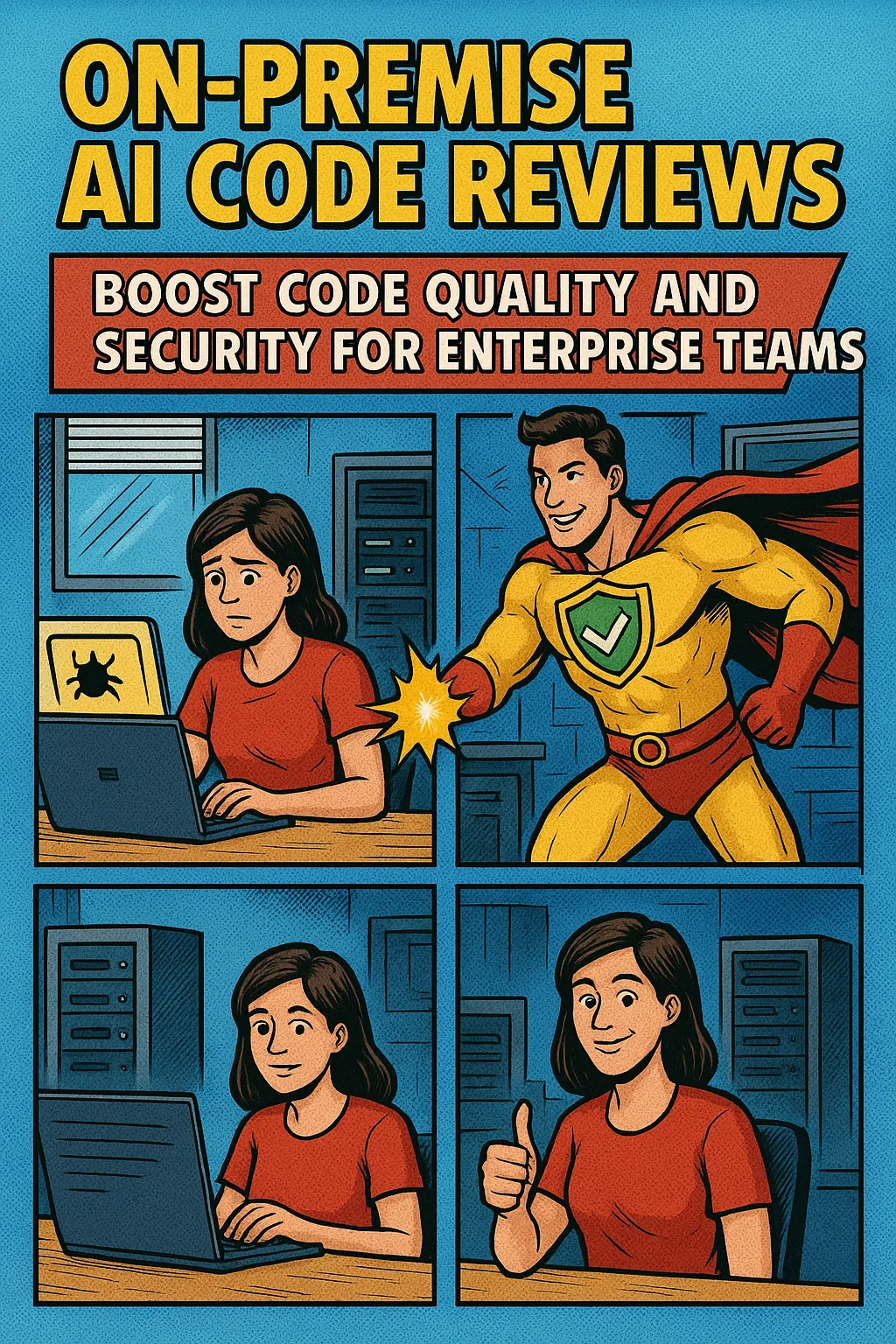Engineering leaders must constantly balance rapid innovation with the need to protect code and data. Delivering features quickly is important, yet doing so without compromising quality or security remains a top priority. AI code reviews offer significant advantages, but relying solely on cloud-based solutions can introduce risks that many organizations, especially in regulated sectors, cannot afford.
AI Code Tools: Transforming Development with a Few Caveats
AI-powered code review tools are changing how teams build software. They catch bugs early, enforce best practices, and help developers at all levels improve their skills. According to a 2024 survey, 78% of engineering teams using AI code tools reported measurable improvements in code quality.
However, these benefits come with trade-offs when code is processed in the cloud. Handing over your most sensitive assets to third-party servers can expose your organization to unnecessary vulnerabilities. This is especially true for industries with strict data protection requirements.
The Power of On-Premise Deployment
On-premise deployment puts you in control of your infrastructure, data, and security protocols. Keeping everything within your own environment minimizes exposure and maximizes peace of mind. Industry reports indicate that companies using on-premise AI code tools experience up to 40% fewer security incidents related to code leaks or unauthorized access.
This approach is particularly valuable for organizations handling sensitive data or operating under strict compliance regimes. By retaining control over your code and metadata, you not only meet regulatory requirements but also strengthen trust with customers and team members.
How Panto Delivers On-Premise Compatibility
Panto enables organizations to run the entire code review process within their own infrastructure, whether on physical servers or in a private cloud. Code and metadata remain securely inside your environment at all times. Panto retrieves code only as needed from your version control system, processes it locally, and never retains it after the review is complete. All metadata and system-generated comments stay within your infrastructure, giving you complete control and alignment with internal security policies. This makes Panto especially well-suited for enterprises with stringent data residency or regulatory needs.
The Strategic Value of On-Premise AI Code Reviews
On-premise deployment goes beyond basic compliance and acts as a catalyst for smarter, more secure development.
- Accelerated Reviews: Running AI code reviews on your own servers eliminates latency and reduces bottlenecks, enabling faster feedback loops.
- Custom Security Measures: You can tailor access controls, encryption, and monitoring to fit your organization’s specific requirements.
- Effortless Integration: Solutions like Panto’s on-premise offering integrate smoothly with your existing workflows, so your team can stay focused on delivering value.
What Engineering Leaders Should Look for in On-Premise AI Code Review Tools
Not all tools are designed for on-premise environments. The most effective options are built with enterprise needs in mind.
- Simple Setup: Look for tools that are easy to deploy, without requiring extensive configuration.
- Scalability: The solution should grow alongside your team, supporting everything from small projects to large-scale enterprise needs.
- Adaptive Learning: Choose tools that learn from your codebase and adapt to your team’s unique style, providing increasingly relevant feedback over time.
Panto exemplifies these qualities with its on-premise compatibility, offering teams the flexibility and security they need to build confidently.
Empowering Engineering Teams for the Future
Engineering leaders are tasked with driving innovation while maintaining the highest standards of security and quality. On-premise deployment is more than a technical detail. It is a strategic advantage. By choosing on-premise AI code review solutions, you enable your team to leverage cutting-edge technology without losing control or compromising compliance.
As you evaluate your options, prioritize tools that support on-premise deployment. This approach gives you the confidence that your code and data are protected while empowering your team to deliver high-quality software at scale. With Panto’s on-premise capability, you can unlock the full potential of AI code reviews while keeping everything securely within your own environment, setting your team up for long-term success.
Panto can be your new AI Code Review Agent. We are focused on aligning business context with code. Never let bad code reach production again! Try for free today @ Panto’s website!






